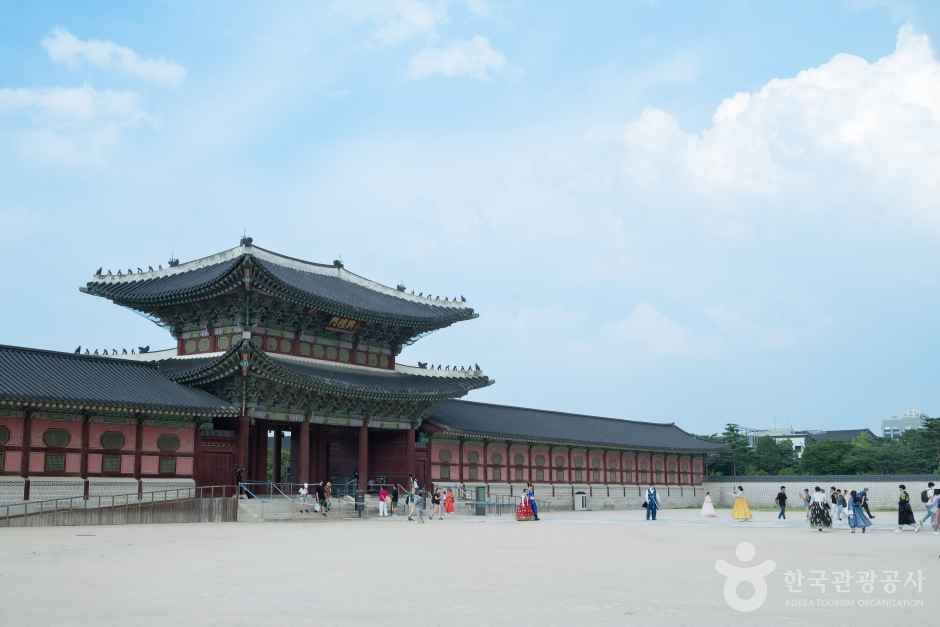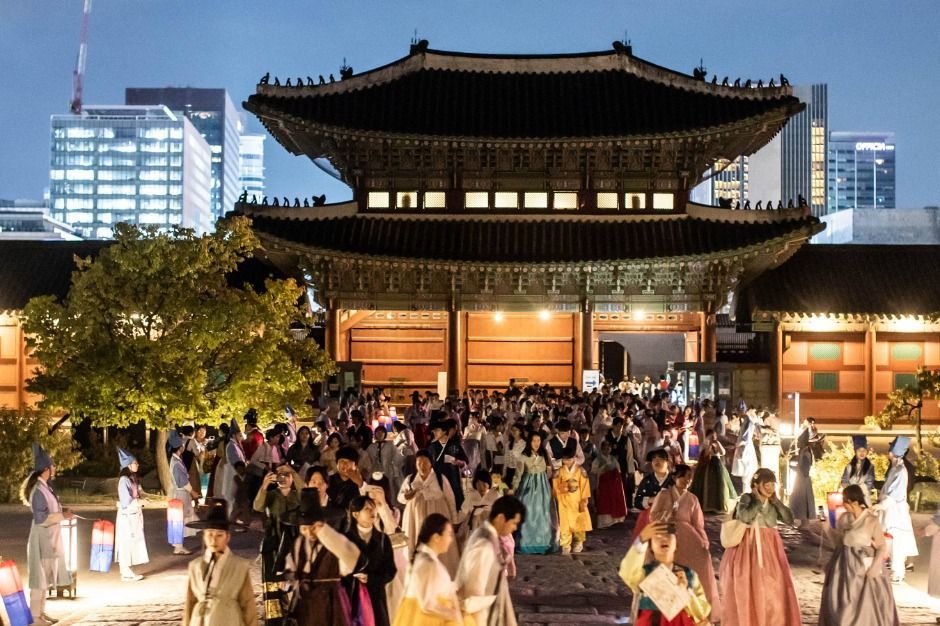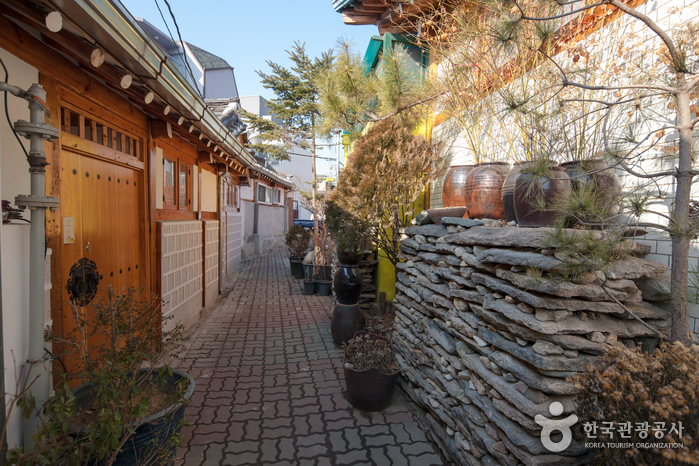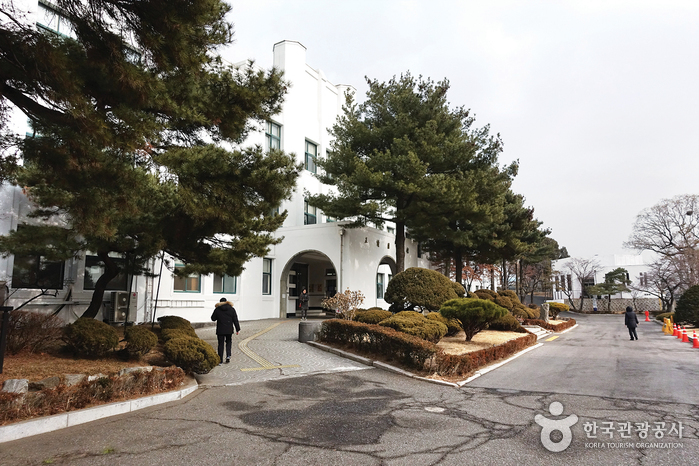Bubu Sikdang (부부식당)
9.2Km 2021-03-26
43, Dongsung-gil, Jongno-gu, Seoul
+82-2-765-6056
You can enjoy fusion dishes in a cozy atmosphere. This Korean dishes restaurant is located in Jongno-gu, Seoul. The representative menu is royal stir-fried rice cake.
Troubadour - Hongdae Branch [Tax Refund Shop] (트루바두르 홍대)
9.2Km 2024-04-18
F1, F2 (Donggyo-dong), 137, Eoulmadang-ro, Mapo-gu, Seoul
-
Tonymoly - Hongdae Branch [Tax Refund Shop] (토니모리 홍대)
9.2Km 2024-04-23
1, Hongik-ro 3-gil, Mapo-gu, Seoul
-
Gyeongbokgung Palace (경복궁)
9.2Km 2025-06-19
161 Sajik-ro, Jongno-gu, Seoul
+82-2-3700-3900
Gyeongbokgung Palace was built in 1395 as the official palace of the Joseon dynasty by Yi Seong-gye, the future King Taejo and founder of the new regime. Gyeongbokgung Palace is commonly referred to as the Northern Palace because of its location to the north, comparied to Changdeokgung Palace in the east and Gyeonghuigung Palace in the west. Gyeongbokgung Palace is arguably the most beautiful and is the largest of all five palaces. Many Joseon kings were crowned here. The premises were once destroyed by fire during the Imjin War (1592-1598). However, all of the palace buildings were later restored under the leadership of Heungseondaewongun during the reign of King Gojong. The assassination of Empress Myeongseong, however, resulted in Gyeongbokgung Palace losing its function as a royal palace, eventually witnessing the downfall of the Joseon dynasty. Gyeongbokgung Palace retains the original Gyeonghoeru Pavilion, a prime example of Joseon architecture, and the Hyangwonjeong Pavilion and pond. The sculptures in the Geunjeongjeon Hall exemplify Joseon-era sculpture techniques. The west side of the area outside Heungnyemun Gate is occupied by the National Palace Museum of Korea, while the eastern side of Hyangwonjeong Pavilion within the Gyeongbokgung Palace is occupied by the National Folk Museum of Korea.
K-Royal Culture Festival (궁중문화축전)
9.2Km 2025-07-29
161 Sajik-ro, Jongno-gu, Seoul
+82-1522-2295
The K-Royal Culture Festival is held at the five Royal Palaces and Jongmyo Shrine. The festival first began in 2014 and provides visitors with first-hand knowledge of these important cultural heritages through unique performances, exhibitions, experiences and programs. The festival expanded in 2021 to be hosted twice a year, in spring and in fall.
Åland - Hongdae Branch [Tax Refund Shop] (에이랜드 홍대점)
9.2Km 2024-06-27
29, Yanghwa-ro 16-gil, Mapo-gu, Seoul
-
Wonhalmeoni Bossam Hongik University Station (원할머니보쌈 홍대역)
9.2Km 2024-03-19
10 Yanghwa-ro 18an-gil, Mapo-gu, Seoul
+82-2-338-5356
Wonhalmeoni Bossam is a bossam (kimchi cabbage wraps with pork) specialty restaurant located near Hongik University Station. Bossam is a dish where boiled pork is eaten with kimchi and various leafy vegetables. In winter, they offer a special dish called eorigul bossam (oyster wraps with pork), which is made with pork boiled with seasoned oysters. They also serve jokbal (braised pigs' feet) and yangnyeom jaengban bibim memilmyeon (jumbo spicy buckwheat noodles).
Seochon Village (서촌마을)
9.2Km 2024-12-02
45 Pirundae-ro, Jongno-gu, Seoul (Nuha-dong)
Seochon Village is the name given to the area to the west of Gyeongbokgung Palace. It is a historic village, home to old shops and hanok buildings that have stood the test of time. Korean traditions and contemporary sensibilities coexist within Seochon Village’s maze-like alleyways, creating the unique ambience that makes the district so beloved. One can find shops, guesthouses, cafés, and restaurants in the village.
Jeongdok Library (서울특별시교육청 정독도서관)
9.2Km 2021-05-08
48, Bukchon-ro 5-gil, Jongno-gu, Seoul
+82-2-2011-5799
Jeongdok Library opened in January 1977 on the former site of the Gyeonggi High School in Bukchon, Jongno-gu, Seoul. As a public city library, it boasts little under half a million books and 16,300 reference materials. The Seoul Education Museum in the library houses a collection of 12,000 reference materials.
In addition to basic library functions (lending books and offering archives and reading rooms to the public), the library runs various cultural programs such as monthly lectures by invited authors, photo exhibitions, reading seminars, and music/dance performances.
Muji - AK & Hongdae Branch [Tax Refund Shop] (MUJI AK&홍대)
9.2Km 2024-04-23
3F, 188, Yanghwa-ro, Mapo-gu, Seoul
-
![Troubadour - Hongdae Branch [Tax Refund Shop] (트루바두르 홍대)](http://tong.visitkorea.or.kr/cms/resource/14/2889314_image2_1.jpg)



![Åland - Hongdae Branch [Tax Refund Shop] (에이랜드 홍대점)](http://tong.visitkorea.or.kr/cms/resource/63/2887763_image2_1.jpg)


![Muji - AK & Hongdae Branch [Tax Refund Shop] (MUJI AK&홍대)](http://tong.visitkorea.or.kr/cms/resource/16/2888216_image2_1.jpg)
 English
English
 한국어
한국어 日本語
日本語 中文(简体)
中文(简体) Deutsch
Deutsch Français
Français Español
Español Русский
Русский